Emission nebula in direction of Tarazed
An emission nebula has been discovered in a close apparent proximity to the star Tarazed in constellation Aquila. The star, also known as γ Aquilae, has a magnitude of 2.72 and significantly outshines the nebula. This likely explains why the nebula remained unnoticed until now. The apparent diameter of the nebula is approximately 27 arcminutes and its center is located about 7 arcminutes away from Tarazed. Most likely Tarazed is not the ionization source for the nebula.
Click on the image to load a full view / full resolution version using a JavaScript viewer.
The bright star in the center of the image is Tarazed. The discovered nebula (the large object near the center) appears red to orange because it is only visible in the H-alpha channel.
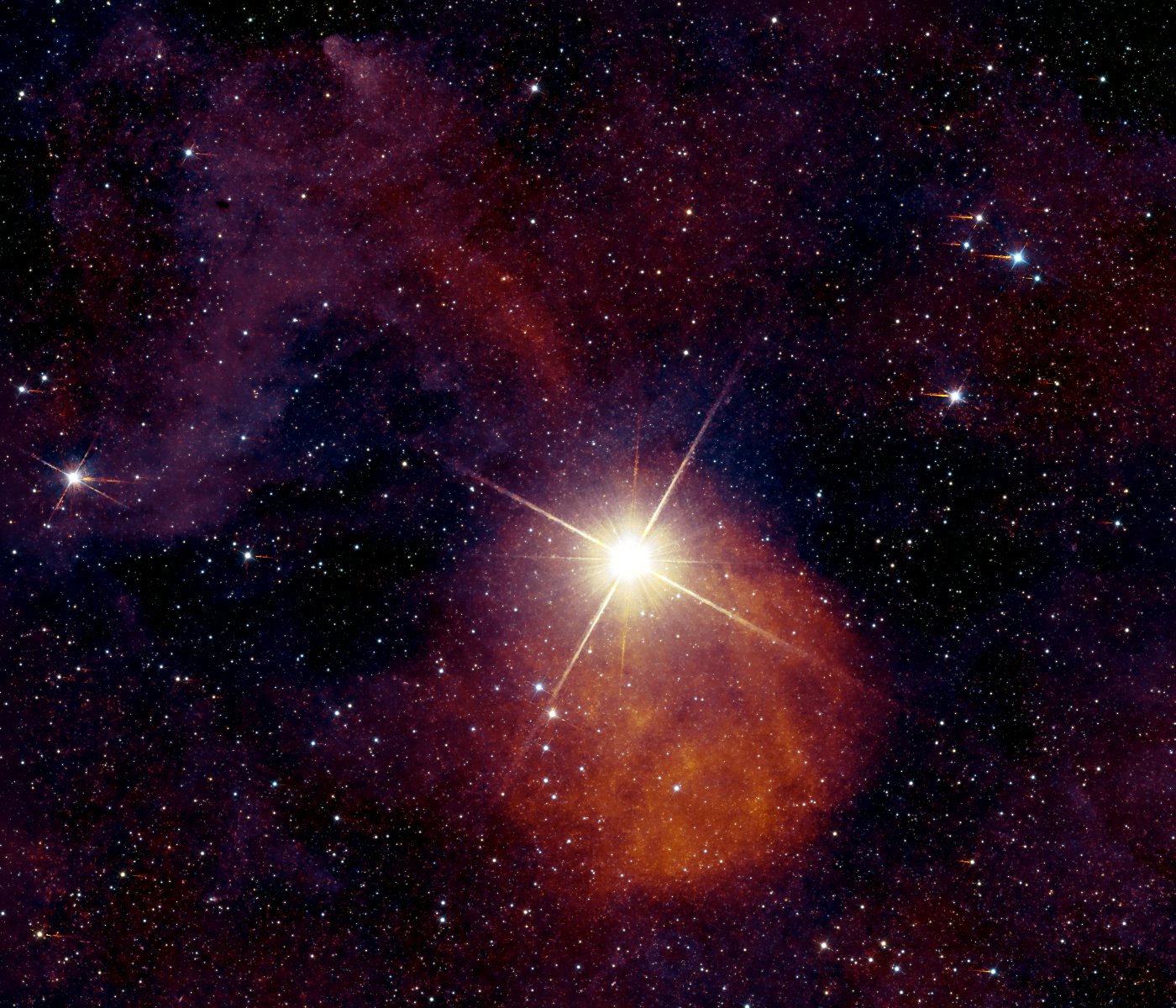
Data of the nebula
| Position (J2000): | RA=19h46m08.0s DEC=10°30′01″ |
|---|---|
| Diameter: | 27.4′ |
| H-alpha surface brightness (at ground, see below): | Center region (0<r≤7.5′): 0.140 photons/(s×arcsec²×m²) Outer region (7.5′<r<13.7′): 0.059 photons/(s×arcsec²×m²) |
The surface brightness was derived from electron flux measurement, assuming the following parameters and assumptions:
- Optical transmission: 75% (reflectance of the main mirror, transmission of the corrector, average transmission of the filter: angle of incidence varies an therefore also the filter transmission)
- Quantum efficiency of the sensor (IMX455) at 656.3nm: 57%
- Aperture: 0.116 m² (40 cm main mirror minus 11 cm secondary mirror)
Ionization source
Tarazed is a bright giant star of the spectral type K3 II, in a stage of stellar evolution in which helium is burned to carbon. These stars have been identified as X-ray sources (e.g. Reimers et al. and Ayres). However, the X-ray luminosity of Tarazed is only about 1.1×1028 erg/s (Reimers et al.). This level of X-ray emission is too weak to ionize the discovered nebula. At a distance of 83pc (as assumed by Reimers et al.) the H-alpha luminosity (a fraction of the total luminosity) would be at least 4.4×1031 ergs/s. (Extinction was ignored in the determination of surface brightness.) Furthermore, Tarazed lies quite far from the (apparent) center of the discovered nebula.The ROSAT measurements used for the publications cited in this section also detected a few other possible ionization sources. Click on this link for a presentation of the sources. The presentation lists the number of counts detected in the total energy range and shows the regions from which the counts were extracted. None of the sources is significantly brighter than Tarazed. This, coupled with the fact that the nebula is only 7° away from the galactic plane, raises the question of X-ray extinction. Major X-ray extinction of Tarazed, and thus a much higher X-ray luminosity, is not plausible because the ratio of optical to X-ray luminosity is similar to that of comparable stars; see Reimers et al. and Ayres). For the other sources, this can't be excluded. It appears that the nebula lies at a greater distance, and the ionization source is partially or completely extincted. The latter case seems more likely due to the fact that none of the detected ionization sources is located in the center of the nebula (which appears to be roughly spherical).
Remarks. ROSAT sequence number is rp200405n00. Sources were extracted by the MAP algorithm in the broad-band image because Tarazed is missing from the "screened" source list of the ROSAT Result Archive, although the source is clearly visible in the images."
Detection
The nebula was first observed in early results of a survey. Because the stars in the image were reduced it was not clear whether this is a nebula or some kind of artifact (e.g. halos from the filter or image processing artifacts).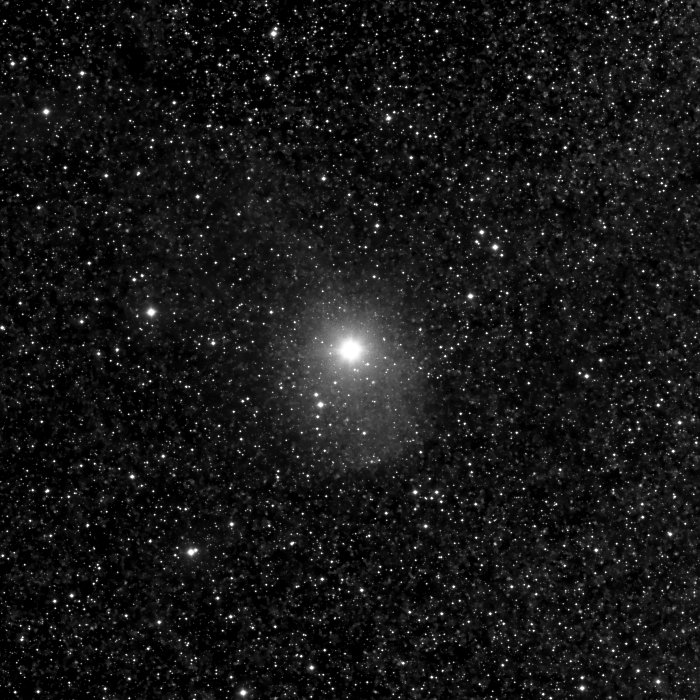
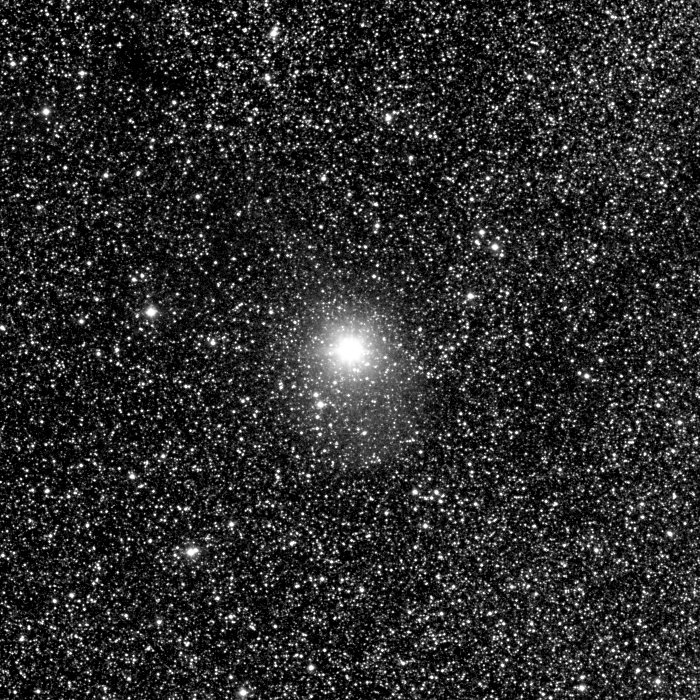
Unfortunately, observation with a larger instrument was not trivial. If an interference filter is placed close to the image sensor,
a fraction of the light that falls on the image sensor is reflected by the microlenses, which act like a reflective grating.
The periodic pattern created in this way is then reflected by the filter back onto the sensor, causing the artifacts shown in the following image.
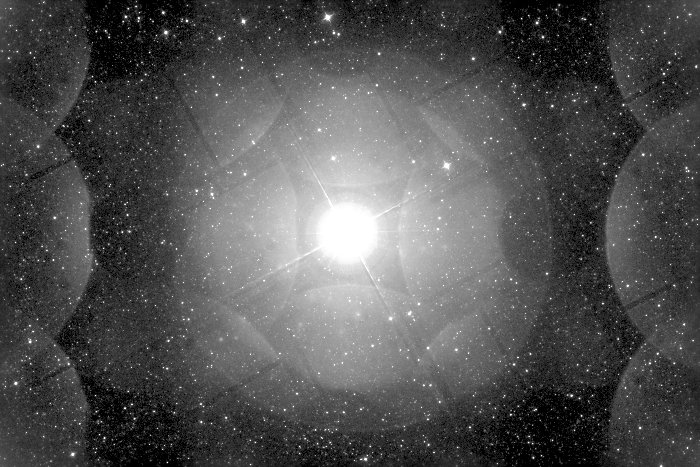
These periodic artifacts become larger and fainter if the distance between the filter and the sensor is increased because they consist of defocused reflections of the star. The filter was, therefore, placed between the corrector and the secondary mirror.
Unfortunately, this configuration also causes reflections, now between the (curved) surface of the corrector and the filter.
However, these reflections can be shifted out of the field of view if the star is close to the border.
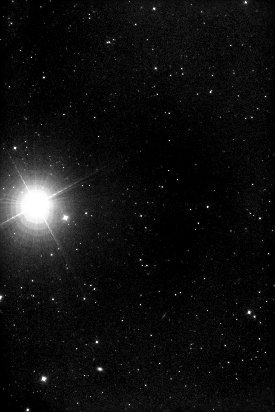
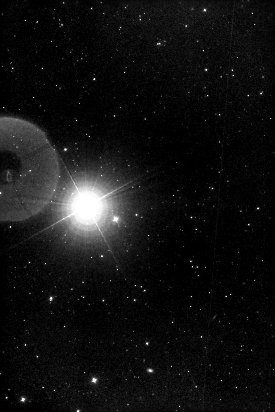
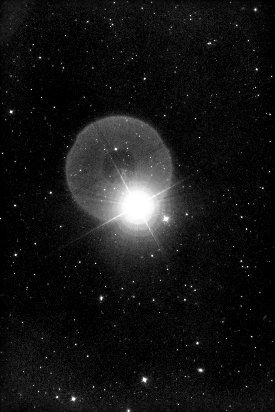
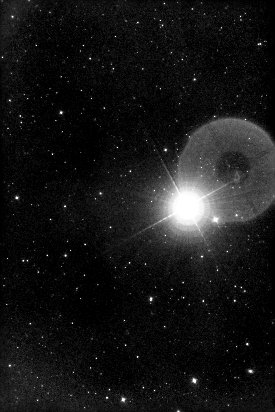
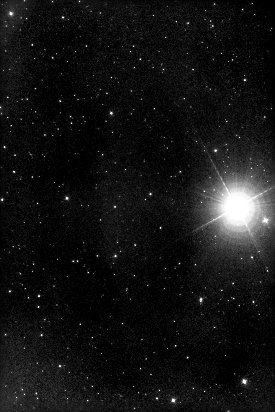
Therefore, the image of the discovered nebula is a mosaic of two tiles in which Tarazed is close to the border.
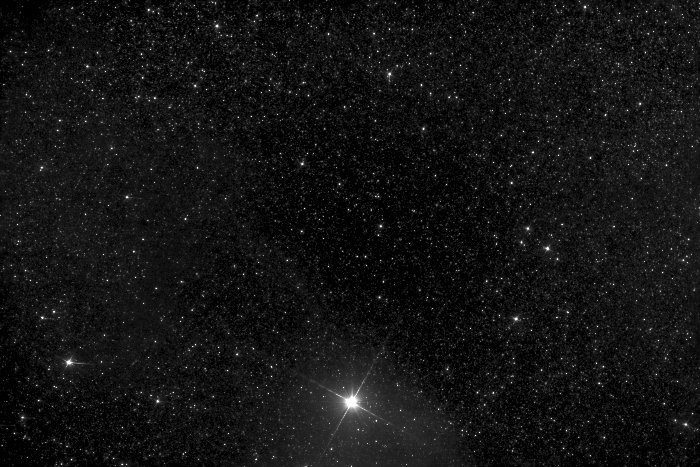
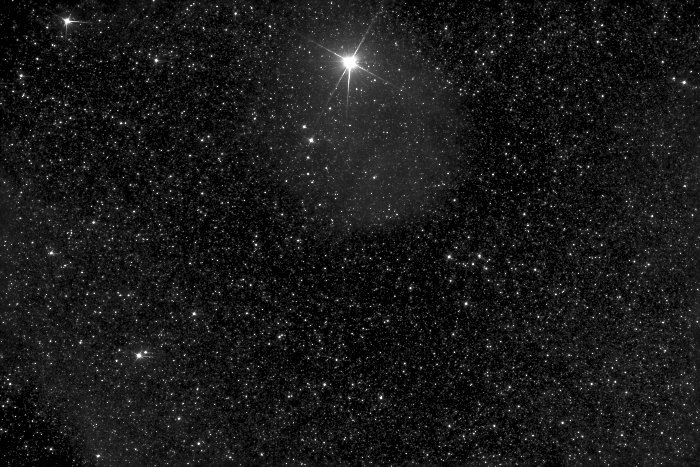
The reflections shown above occur at wavelengths where the interference filter is partially transmissive. Fully blocked wavelengths do not reach the sensor, and fully transmitted wavelengths are not reflected by the filter. The intensity of the artifacts, therefore, depends on the ratio of the partially transmitted wavelengths to fully transmitted wavelengths. This is the reason why the reflection artifacts shown here only occurred with the narrowband H-alpha filter and were non-detectable with the broadband filter used for the blue continuum.
Image and instrument data
| FOV: | 1.25° × 1.11° (full view) | ||||
|---|---|---|---|---|---|
| Date: | August and September 2023 | ||||
| Location: | Pulsnitz, Germany | ||||
| Instrument: | 400mm Newton at f=1520mm | ||||
| Camera Sensor: | Sony IMX455 | ||||
| Orientation: | North is up (exactly in the image center) | ||||
| Scale: | 1 arcsec/pixel (at full resolution) | ||||
| Total exposure times: |
|
Image processing
All image processing steps are deterministic. There was no manual retouching or any other kind of non-reproducible adjustment. No AI was used; the images shown here are the results of deterministic calculations and not hallucinations of an AI.The software which was used can be downloaded here.
Image processing steps were:
- Bias and dark current subtraction, flatfield correction, noise estimation
- Alignment and brightness calibration using stars
- Stacking with masking unlikely values and background correction
- Extracting stars from the emission line images using information from continuum images
- Denoising and deconvolution both components (stars and residual)
- RGB-composition
- Dynamic range compression using non-linear high-pass filter
- Tonal curve correction
References
- D. Reimers, M. Huensch, J. H. M. M. Schmitt, and F. Toussaint. Hybrid stars and the reality of “dividing lines” among G to K bright giants and supergiants. A&A, 310:813–824, June 1996. [ http ]
- Thomas R. Ayres. X-rays from hybrid stars. ApJ, 618(1):493, January 2005. [ http ]
This work made use of the ROSAT public archive at the HEASARC of the NASA Goddard Space Flight Center and the SIMBAD database, maintained by CDS, Strasbourg, France.